
This parent guide supports parents in helping their child at home with the 7th grade Science content.
- Subject:
- Science
- Material Type:
- Reference Material
- Vocabulary
- Author:
- Kelly Rawlston
- Letoria Lewis
- Date Added:
- 10/11/2022

This parent guide supports parents in helping their child at home with the 7th grade Science content.

This resource accompanies our Rethink 7th Grade Science course. It includes ideas for use, ways to support exceptional children, ways to extend learning, digital resources and tools, tips for supporting English Language Learners and students with visual and hearing impairments. There are also ideas for offline learning.

The AQ-IQ Contest for Seventh Grade Students has students creating a project on an air quality problem, looking for solutions to the problem, and creating a poster, on-line interactive, artist, or video project to educate others about the issue. Students will submit the projects and bibliographies using an on-line tool. The pest projects will be invited to a recognition ceremony and receive a prize package. Visit the AQ-IQ Landing Page for more information and resources: http://web.eenorthcarolina.org/resource/about.aspx?s=121764.0.0.37430
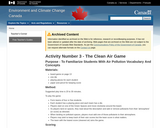
This board game familiarizes students with air pollution vocabulary and concepts.
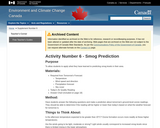
Students will relate weather conditions to ground level ozone and air quality conditions.

The AirData website provides access to air pollution data for the entire United States. Users have the ability to produce reports and maps of air pollution data based on criteria that they specify.
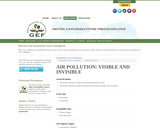
Students will test for visible and invisible pollutants in the air. Students will keep a journal of experimental procedures, results, and conclusions.
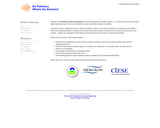
Students will focus on the science behind air quality issues, looks for relationships and trends among the data collected via real time sources, and will examine the health impact of air pollution. Ozone and particulate matter are covered in detail.
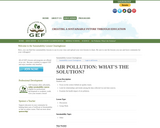
Students will investigate air quality issues by analyzing a map of the United States showing areas of poor air quality.
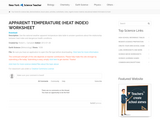
Students use the national weather apparent temperature data table to answer questions about the relationship between heat index and dangerous health conditions.
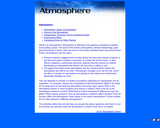
Students learn about the composition of the atmosphere and how atmospheric conditions affect humans.

In this lesson, students will learn how scientists measure small particles called aerosols in Earth's atmosphere and make their own measurements of atmospheric aerosols.

In this lesson, students create a greenhouse gas, carbon dioxide, through a simple chemical reaction, measure the effect of the gas on air temperature, and relate their findings to the greenhouse effect in our atmosphere.
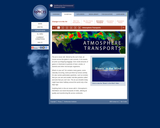
This tutorial describes how air moves across the globe in vast currents.

Students will simulate the ozone hole in a lab and they will test the effects of exposure to ultraviolet radiation on living cells and consider how this information could apply to them.
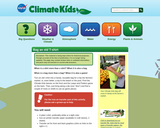
This site lists the necessary supplies, along with the step-by-step directions, to turn a t-shirt into a carry-all bag. Also included are links to two iron-on transfers - the Climate Kids banner and the Leaps and Flutters game - for use in decorating the bag. The Climate Kids website is a NASA education resource featuring articles, videos, images and games focused on the science of climate change.
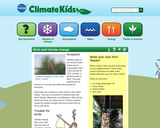
Some bird species appear to respond to extreme weather changes in their native habitat by moving to more hospitable environments. This article discusses the role of NASA satellites, along with field and citizen scientists, in studying that movement. The article also includes an activity on constructing a bird feeder. The Climate Kids website is a NASA education resource featuring articles, videos, images and games focused on the science of climate change.
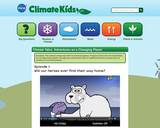
These animated stories follow the adventures of a polar bear and a fish. In the two episodes here, one just over four minutes, the other just over five, the duo come face to face with worldwide environmental changes. This lesson is part of the Climate Kids website, a NASA education resource featuring articles, videos, images and games focused on the science of climate change.
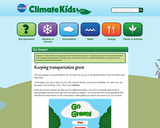
This game is played on an online map of a fictitious city. Players are challenged to complete an assigned trip in the most environmentally friendly way possible while staying within time constraints. The Climate Kids website is a NASA education resource featuring articles, videos, images and games focused on the science of climate change.

This question is addressed through a series of questions and answers, each providing related introductory information such as how climate change is studied, the history of Earth’s climate, and the effects of climate change on Earth’s geology and biology. The Climate Kids website is a NASA education resource featuring articles, videos, images and games focused on the science of climate change.